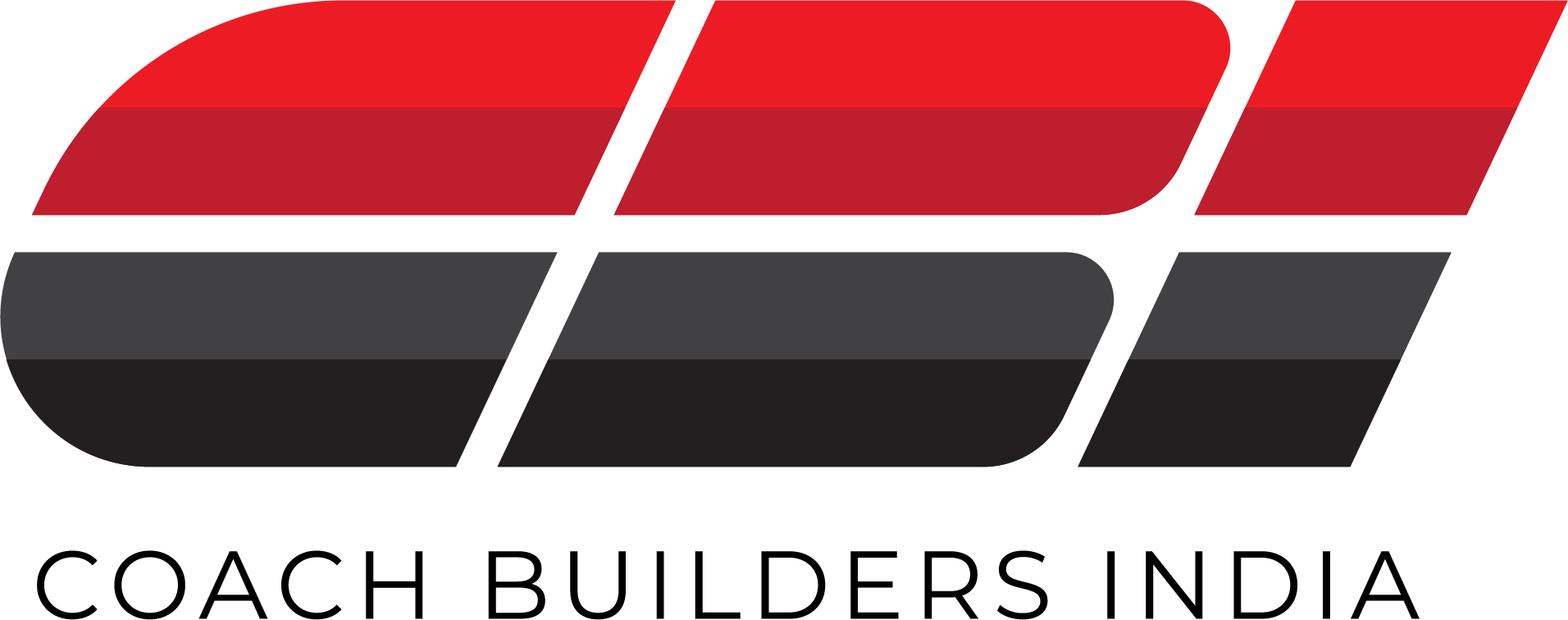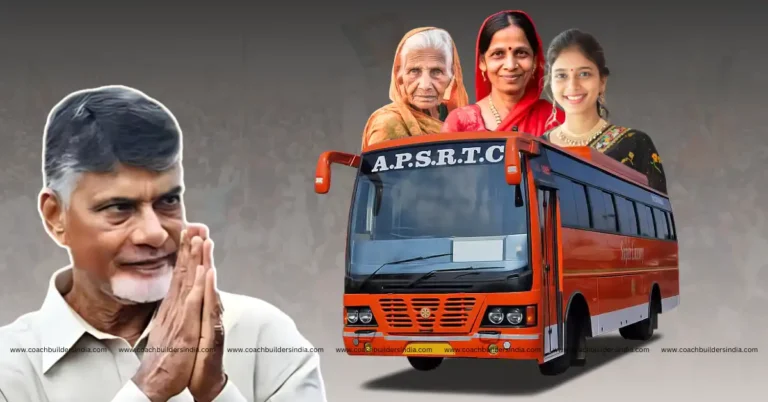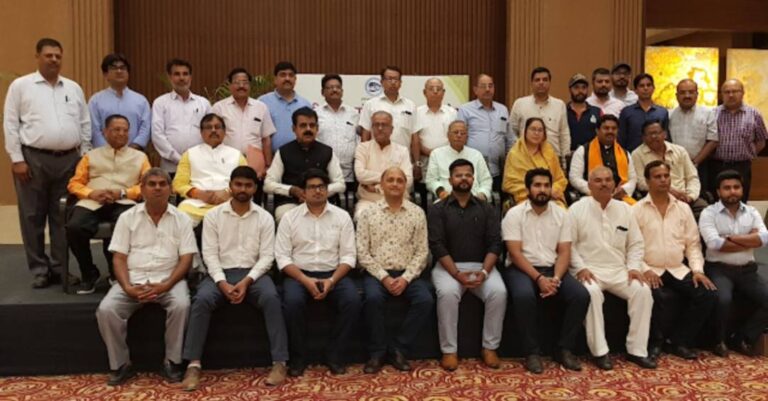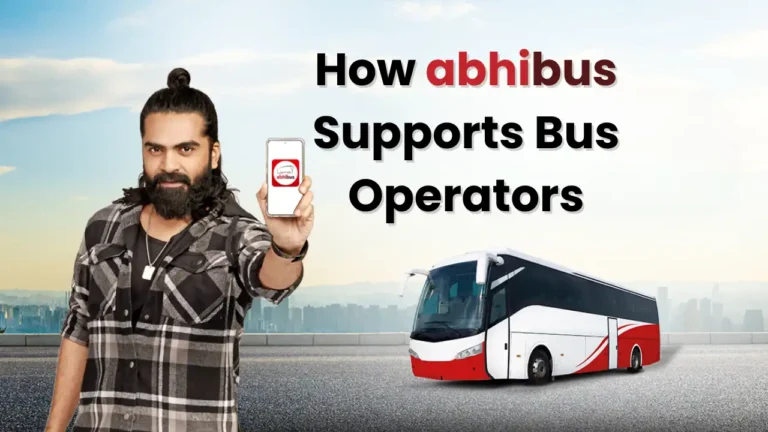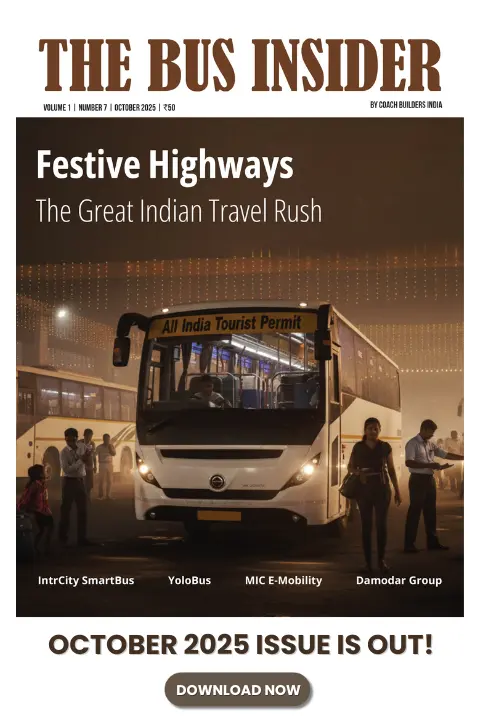IRA Travels’ Kaja Prem Lal Exposes the Hidden Cracks in India’s Bus Industry
Bus operator insights: Kaja Prem Lal reveals the tough realities of running a modern bus business in India – from soaring costs to electric bus hype – warning the industry could face a slow collapse without urgent intervention.
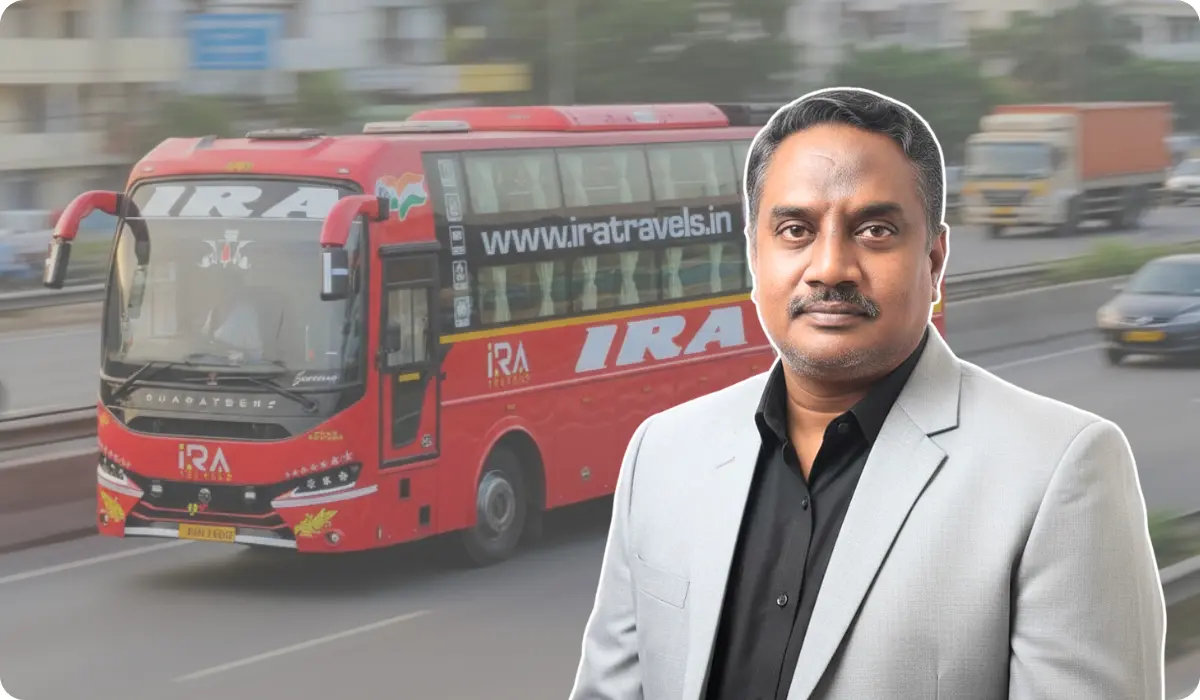
Intercity buses are the lifeline of India, moving millions daily through highways, hills, and heartlands. But behind the roaring engines and glossy exteriors lies a business under mounting pressure.
Costs are soaring, margins are shrinking, and competition, from both within and outside the sector, is getting fiercer by the day.
Few people understand this better than Kaja Prem Lal, the CEO of IRA Travels, Vijayawada, Andhra Pradesh.
What began in 2005 as a small contract-based operation in Andhra Pradesh has since grown into a 63-bus fleet spanning four southern states. With over 250 employees and a reputation for dependable service, IRA Travels is a name built on consistency, but also on constant firefighting.
In this no-holds-barred conversation with Zainab Azhar, Kaja Prem Lal pulls back the curtain on the harsh realities of running a modern-day bus business in India. From rising fuel and production costs to the unrealistic hype around electric buses, he makes one thing clear – the industry is on the brink, and unless serious interventions happen soon, it could be headed for a slow collapse.
This is not your typical success story. It’s a deep, sobering look at an industry in flux, and the people trying to keep it moving.
Festive Rush 2025: IntrCity SmartBus CEO Rathi on Booming Routes and Changing Trends
Intercity bus operations have become incredibly competitive today. What do you believe gives you an edge? How do you stay ahead in this crowded market?
That’s a great question — because yes, this industry has become intensely competitive. Too many operators are chasing the same passenger base, and only a few will stand out.
For us, the approach is simple: focus on getting the basics right.
First, we prioritise punctuality. On-time departures and arrivals aren’t optional – they’re the foundation of trust.
Second, we keep our fleet current. Comfort, features, and safety standards evolve fast, and if your buses look or feel outdated, passengers won’t give you a second chance.
And third, and this is something many overlook, we invest deeply in mechanical fitness. Preventive maintenance isn’t a cost, it’s an investment in uptime, reliability, and brand reputation. A breakdown on the road isn’t just a delay, it’s a trust deficit.
In this business, consistency wins. And that begins with discipline, not discounts.
Where do you see the bus industry heading in the next 10 years? What’s your outlook – optimistic or cautious?
The core issue is cost. The price of new buses keeps climbing, fuel costs are volatile, and maintenance isn’t getting any cheaper. At the same time, air travel is becoming more affordable and far more accessible, especially with government initiatives like UDAN and the rapid expansion of regional airports.
Consider this: not too long ago, a trip from Vijayawada to Hyderabad would cost around ₹1,000 by bus and nearly ₹10,000 by flight. Today, that same bus trip costs ₹1,700–₹2,000, while a flight is down to ₹5,000, and sometimes even less.
There’s only so far we can raise bus fares before it becomes unreasonable for passengers. And when flights offer more speed, more comfort, and better value for time, people are going to make that switch. Many already are.
If we don’t rethink cost structures, operating models, and the long-term value proposition of road travel, we’re going to lose a large part of our market.
“Don’t be dazzled by the shiny exterior of a new bus. Inside, this business has challenges that can break your back.”
If that’s the scenario, what do you think the industry can do to stay afloat? Are there any alternatives or solutions?
Honestly, there aren’t many options left on the table right now. But one thing is absolutely clear, we need some form of low-cost bus models.
We keep chasing luxury in bus travel, more features, better seats, bigger promises. But no one’s talking about the one thing that really matters right now – cost.
Input costs are rising steeply. Chassis prices go up by 15% every quarter. Body-building costs go up by another 15%. And operators are expected to keep ticket prices affordable while absorbing a 30% increase in production quarter. That’s not sustainable.
The truth is, unless we start focusing on designing low-cost bus models — not low-quality, but smart, efficient, scalable — we’re going to lose out to every other mode of transport.
Can Electric Buses Go the Distance? LeafyBus’ CEO Rohan Dewan Is Betting on It
Let’s shift to the topic of technology. How are you using it in your operations today? And do you feel anything is still missing?
Technology has definitely made a big impact, especially in the last few years. We now rely heavily on GPS systems to track our fleet in real time.
We have a fair share of Ashok Leyland buses and Leyland’s AL SERVE app is quite handy. It gives us detailed insights on where the bus is, when it departed, what speed it’s traveling at and it helps us monitor vehicle performance and ensure safety across the board.
But yes, I do believe something is still missing, and it’s a gap that directly affects operational transparency.
Right now, there’s no way to verify real-time passenger count with certainty. Say a bus has 40 seats and only 25 passengers board officially, how do I know if the driver doesn’t pick up 5 or 10 more en route and pocket the cash?
If we had seat-based smart sensors, each seat could be monitored. That would give us real-time data on seat occupancy, along with time and location stamps.
That kind of visibility would not only increase operational efficiency, it would also prevent revenue leakage and improve trust in the system.
There’s a big push toward electric and hydrogen-powered buses these days. What’s your take on this shift? Do you see private operators like yourself being able to adopt these technologies easily?
There’s definitely a lot of momentum around electric and hydrogen buses, and the government is actively promoting these technologies. But if you ask me, as a private operator, we’re still quite far from making this transition commercially viable.
Take electric buses, for example. The upfront investment required is substantial, far beyond what most private operators can absorb on their own, especially without consistent and meaningful financial support.
Then there’s the range limitation. Most electric buses today can only run about 250 to 300 kilometers on a full charge. For long-distance operators like us, who cover routes of 500 to 600 kilometers, that’s just not practical. What are we supposed to do, stop midway for a few hours to recharge? That’s not how real-world operations work.
In theory, subsidies could help bridge the gap. But in practice, we don’t have access to reliable or sustained incentives. And without that or the supporting infrastructure like widespread, high-capacity charging stations, adoption is nearly impossible, no matter how willing we are.
The intent is good. The technology is promising. But the business model just isn’t there yet for private, long-haul operators.
If the government really wants private players to go electric, what kind of incentives or support would you say are essential?
First and foremost, we need a robust charging infrastructure. Charging stations must be widely available, especially along intercity routes. Without that, it’s simply not possible to operate long-distance services reliably.
Second, electric buses need a significant improvement in range. For intercity operations, a single charge must cover at least 500 to 600 kilometers. Until we reach that benchmark, operators cannot depend on them for longer routes.
Third, there’s the issue of design and appeal. Many of the electric buses currently available look outdated or unrefined. As I told you earlier, if passengers aren’t visually impressed or comfortable, they won’t choose to travel in them. Aesthetic design and passenger experience matter.
And finally, the financial side needs serious attention. Subsidies are important, yes, but they must be consistent and well-structured. More importantly, access to financing at practical, operator-friendly interest rates is crucial. Without that, the transition to electric will stay aspirational, not operational.
Manoj Soni’s Vision to Transform YoloBus into a Smart, Sustainable Mobility Leader
Let’s talk about challenges. Every business has them, but in bus operations, what are the top five that really keep you on your toes?
This is a tough business. Most people just see the buses running on highways. They don’t realise how much coordination happens behind the scenes.
First, the biggest challenge is keeping the vehicle clean and mechanically sound at all times. Cleanliness and mechanical health go hand in hand. One breakdown can undo months of trust you’ve built with passengers.
Second, we rely heavily on third-party vendors – fuel stations, tyre suppliers, mechanics. And not just one mechanic. Each system in the bus needs a different specialist: someone for the axle, another for steering, electricals, pneumatic lines, and so on.
Third, all these services must be integrated seamlessly into daily operations. If one part fails to align, the entire flow is disrupted. Keeping this machinery well-oiled is an everyday challenge.
Fourth, in the unfortunate case of an on-route breakdown, we must arrange an immediate replacement bus – same configuration, same amenities. If passengers are inconvenienced, they won’t book with us again. Reputation is everything.
Fifth, and most unpredictable, is emergency management. A sudden driver no-show, a tyre burst, a delay at a fuel station – you have to be ready for anything, at any hour. There’s no off-duty in this line of work.
.webp?updatedAt=1762347241587)
A lot of operators have pointed out that the financial support mechanisms need reform. In your opinion, what changes should the government make to better support private bus operators financially?
There’s a lot the government can do to help private operators.
For example, the CGTMA loan scheme is good in theory, but the high interest rates, along with the need to insure both the bus and the loan, create unnecessary financial strain. Waiving these extra charges would be a big relief.
Also, while there are schemes for SC/ST and women entrepreneurs offering 30–40% assistance, the funds are only available after the bus is already running. That doesn’t help with initial setup costs.
Another issue is loan caps. Banks limit loans to ₹5 crore, and even with timely EMIs, I can’t borrow again for two years. This makes expansion difficult when I have the vision but lack the funding.
All I’m asking is for the government to fund 60–70% of the requirements, not 100%. We’re ready to contribute, but we need more support to grow.
75 Years of BRS Travels: Ashwin Reddy Reflects on a Legacy of Trust and Transformation
Looking ahead, what emerging trends do you believe the bus fleet industry should embrace in the near future? Anything you’re personally planning to implement?
Absolutely, I believe the future of bus travel must be more inclusive, family-friendly, and thoughtfully designed. Here are a few trends I think need to become standard in intercity travel:
First, we need pantry services on long routes. Passengers often struggle with food options, and a basic pantry setup would improve their overall experience.
Second, we should have reserved seats for pregnant women, senior citizens, and people with physical challenges. If someone uses a wheelchair, there should be designated spots with accessible boarding and deboarding facilities.
Another important aspect is providing a breastfeeding cubicle. Even a simple, cloth-partitioned seat where a mother can feed her baby privately would make a big difference. Small touches, like a tray attachment for infants to sleep safely, can go a long way.
And here’s something I’m particularly passionate about, an all-female crew. Female drivers and conductors would not only help normalize women in the workforce but also enhance safety and trust, especially for female passengers.
These aren’t just ideas; we’re actively working on incorporating many of them into our upcoming fleet.
This interview was originally published in the May 2025 issue of our monthly magazine, The Bus Insider.
🔊 Are you a bus fleet operator, OEM, or business in the bus industry? Share your story with us and gain valuable exposure to a wide-reaching, industry-focused audience. Contact us at violina@coachbuildersindia.com or WhatsApp +91 8448229959 to get featured!
Catch the latest Bus Industry updates, Exclusive Interviews, Bus News, and International Bus News on Coach Builders India. Download the latest issue of the The Bus Insider magazine for more insights.
